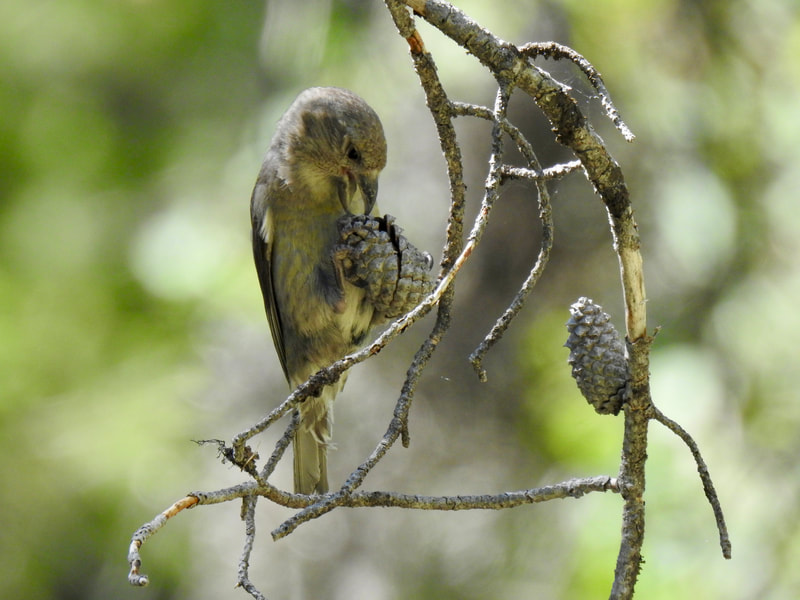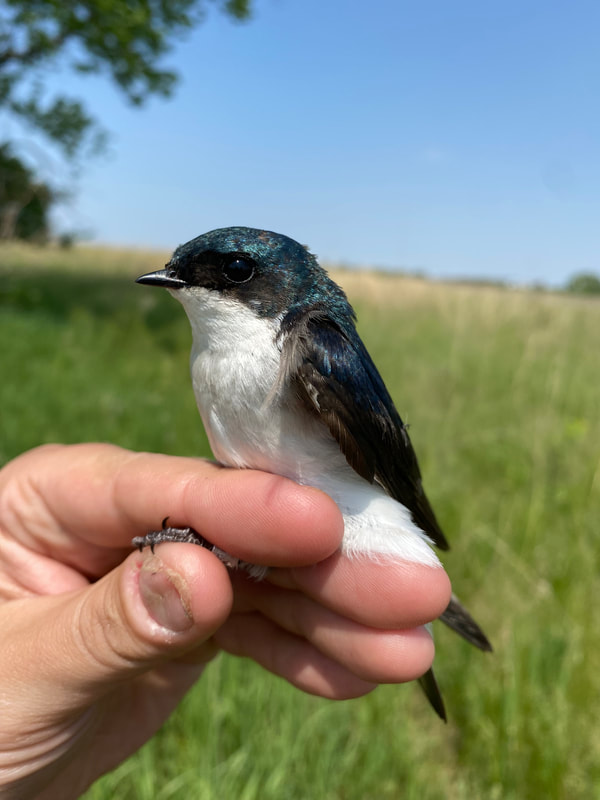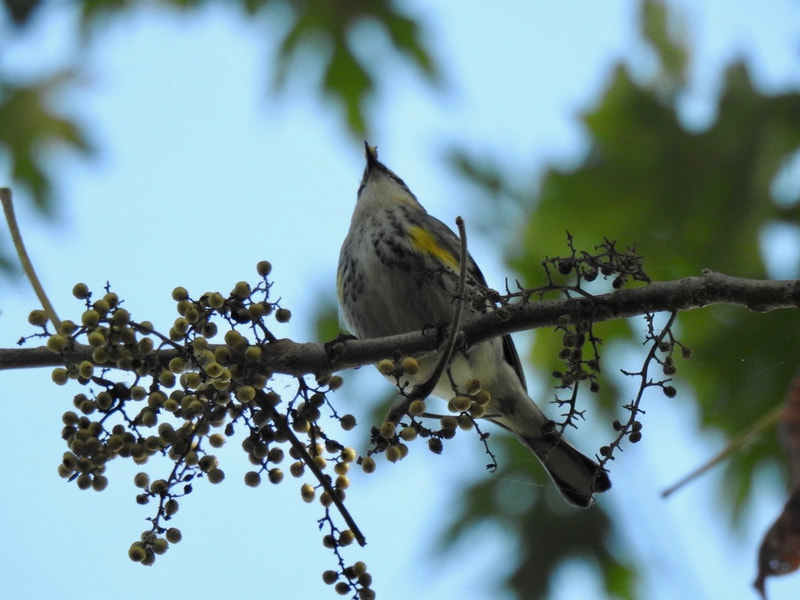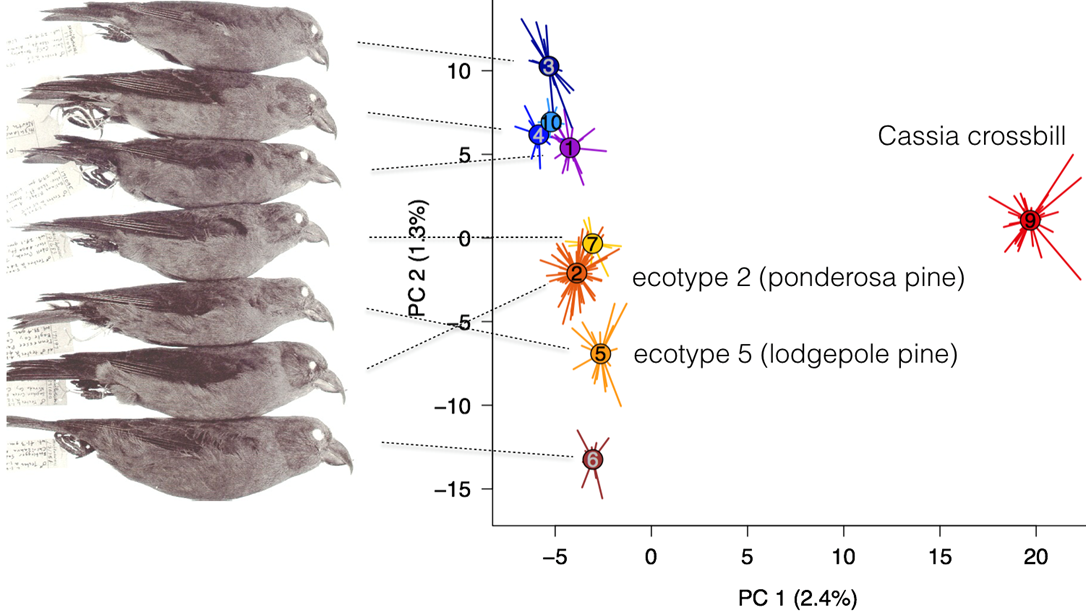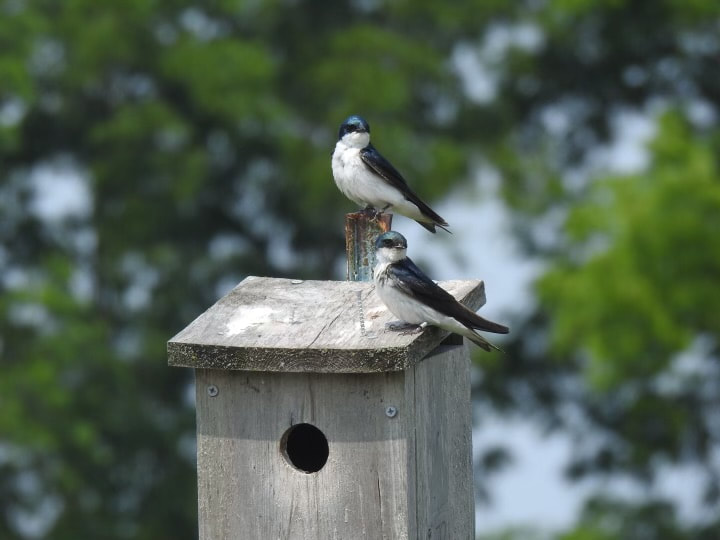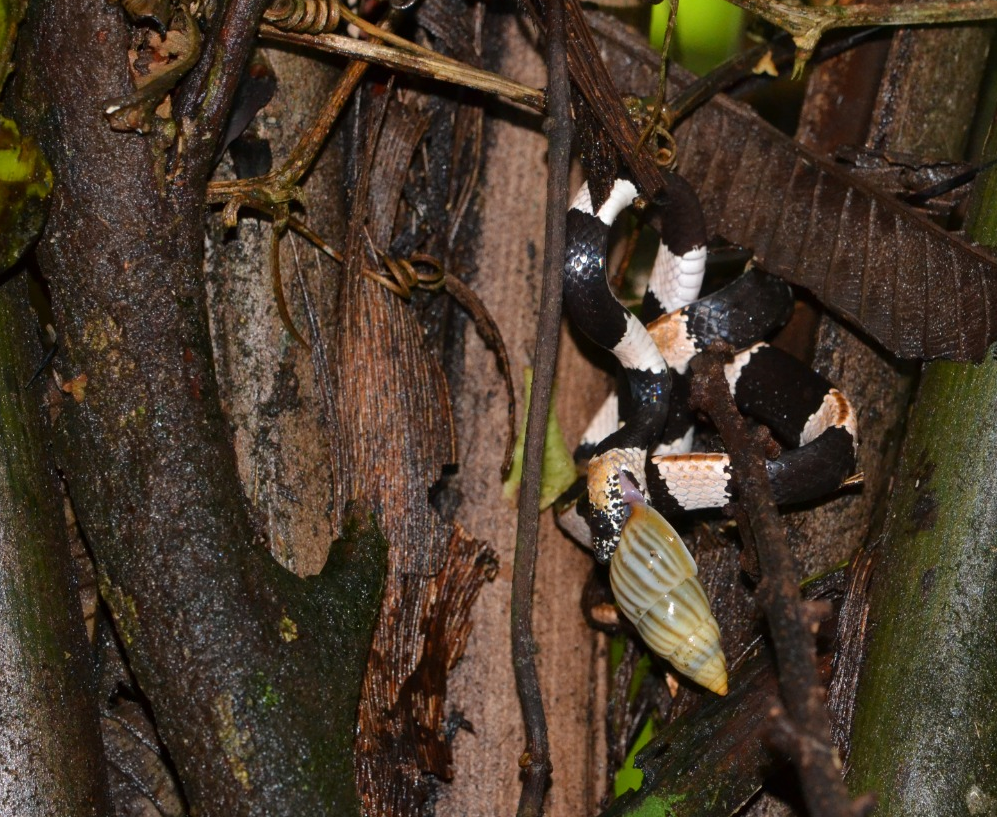I am obsessed with the living world. As a result, I have a wide range of research interests, mostly stemming from questions that arise while I am in the field looking at birds, photographing wildflowers, or recordings the songs of katydids. The thread that ties my research program together is my desire to better understand the evolutionary process in an ecological context. Below are the three main foci of my current research program.
|
The behavioral ecology of adaptive radiation and speciation
Adaptive radiations are characterized by rapid bursts of ecological divergence which may (or may not) lead to the formation of new species. Although the association between adaptation and speciation has been a focus of evolutionary biology since Darwin, the mechanisms that link these key processes remain enigmatic. One focus of my research program seeks to better understand the conditions that lead to a coupling (or decoupling) between adaptive divergence and speciation. Most of this work has focused on the red crossbill complex, an iconic example of adaptive radiation and ecological speciation. The tractable ecology of this system gives us unparalleled opportunities to explore the interplay between adaptive diversification and the evolution of reproductive isolation. I continue to work on several topics in this system, such as cultural evolution of vocalizations, the ecology of reproductive isolating barriers, and the paradoxical link between feeding behavior and trophic morphology. Here is my 2021 Evolution talk on the ecology of bird speciation -> |
|
|
Ecophysiology and the evolution of endotherms
There is a growing realization that endotherms' relationship with temperature is more complex than traditionally assumed. During my postdoctoral research, I am exploring various implications of this observation, including thermoregulatory hypotheses for endotherm color evolution, the adaptive significance of near-infrared feather reflectance, and the interacting effects of humidity and temperature on endotherm performance. Most of this work is being conducted on a population of tree swallows in Ames, Iowa that has been studied for nearly two decades. However, I have also worked on convergent evolution of dark plumage in birds inhabiting cold, wet regions and am beginning to explore the evolution of dark plumage in hot deserts. |
|
Merging foraging theory and comparative methods Organisms that have evolved adaptations for feeding on specific prey often act as generalists with broad dietary niches. This apparent paradox has generated substantial confusion over the role of competition in phenotypic diversification; an issue that permeates much of evolutionary ecology today. In a 1998 paper, Beren Robinson and David Sloan Wilson proposed a simple yet elegant resolution to this paradox, which posits that low-ranking, difficult resources available during periods of food limitation drive most diet-related adaptation. My colleagues and I have recently begun using comparative methods to test predictions from Robinson and Wilson's model. We are interested in further integrating the dynamics from this model into comparative methods to explore the consequences for phenotypic evolution, dietary partitioning, and the mechanisms driving community-level patterns of species and phenotypic diversity. |
